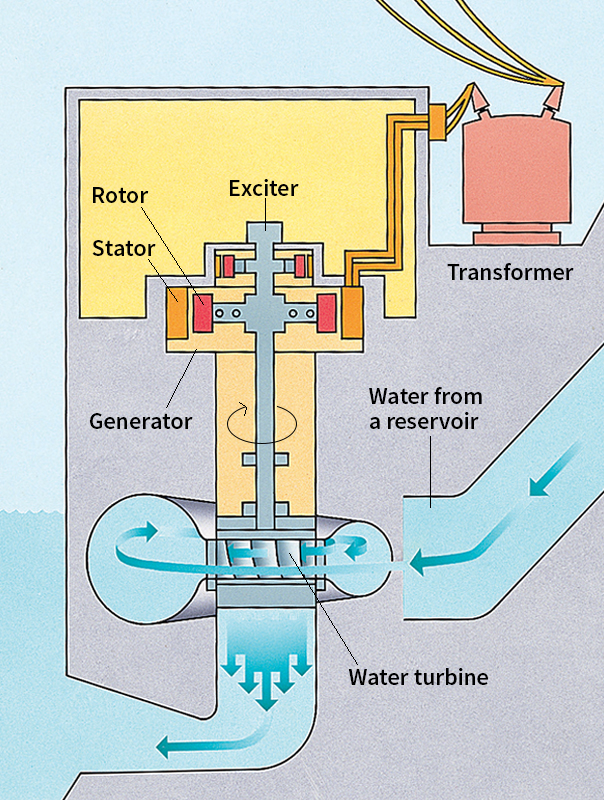Hydroelectric power is electric energy generated using the motion of falling or flowing water. In a hydroelectric power plant, moving water spins a propellerlike device called a water turbine. The turbine’s shaft drives an electric generator. The generator uses the spinning motion to produce electric current. Hydroelectric power plants are often located in or near dams.

People have long made use of the energy of falling water. The ancient Romans, for example, used water-powered wheels to turn millstones, grinding grain. People developed an improved form of water wheel—the turbine—in the early 1800’s. However, steam engines soon replaced water power, which suffered from the disadvantage that it could only be used near rivers and streams. Reliable electric generators were invented around 1870. By 1880, engineers had connected them to water turbines. The resulting electric power could be transmitted long distances over power lines, enabling water power to compete with steam.
Hydroelectric power has long been one of the most widely-used forms of renewable energy. Renewable energy comes from sources that cannot be used up, as can limited-supply fuels like coal and petroleum. The streams that power hydroelectric plants are regularly refreshed by rainfall. Hydroelectric plants are also relatively cheap to operate. In the 2010’s, hydroelectric plants generated about 15 to 20 percent of all electric power. Some countries, such as Norway and Brazil, are particularly favorable for hydroelectric power. These countries have notably large streams with high falls. Such countries may rely primarily on hydroelectric plants for their electric supply.
